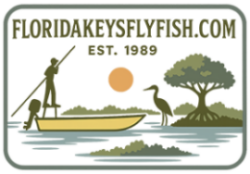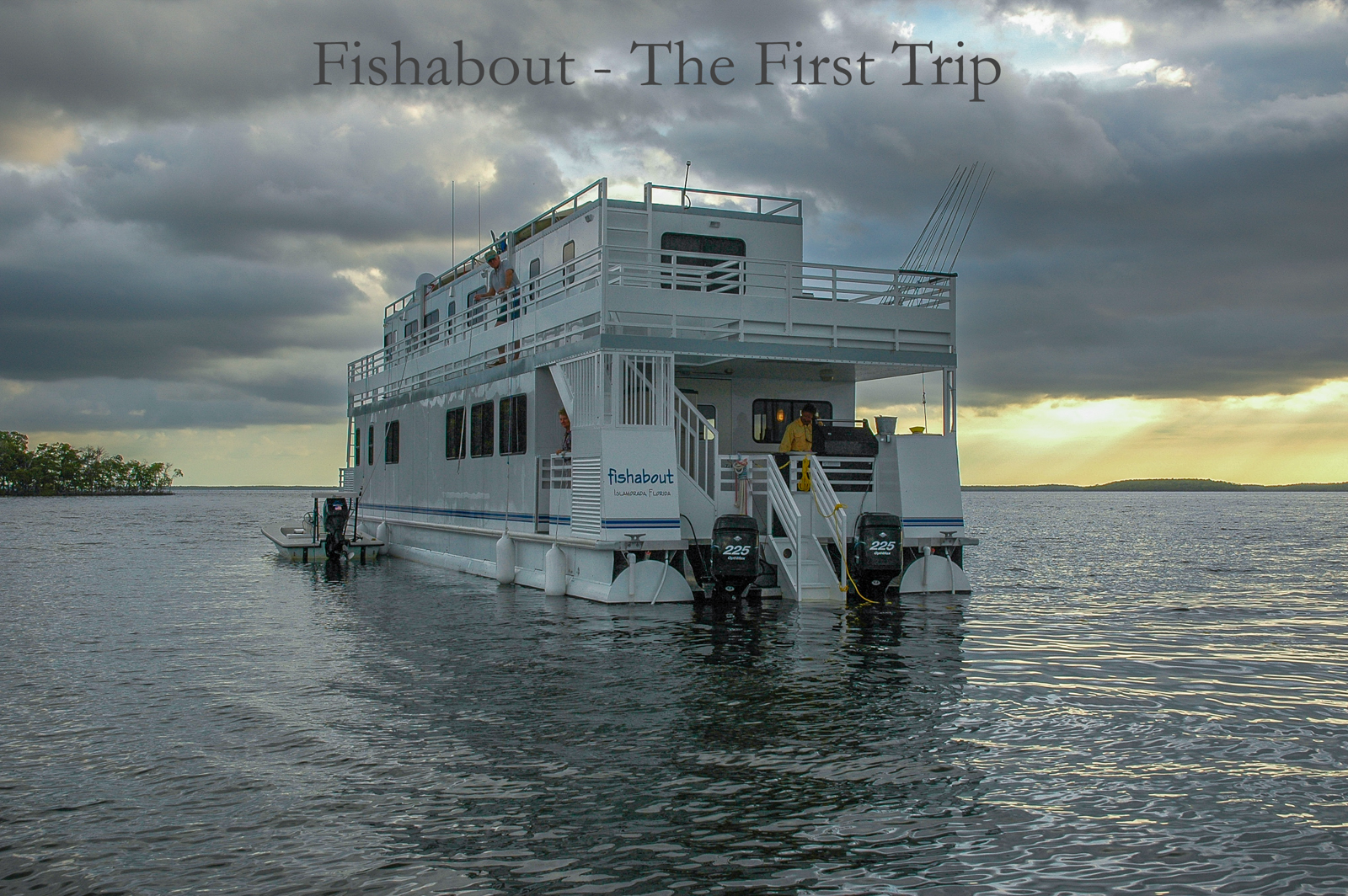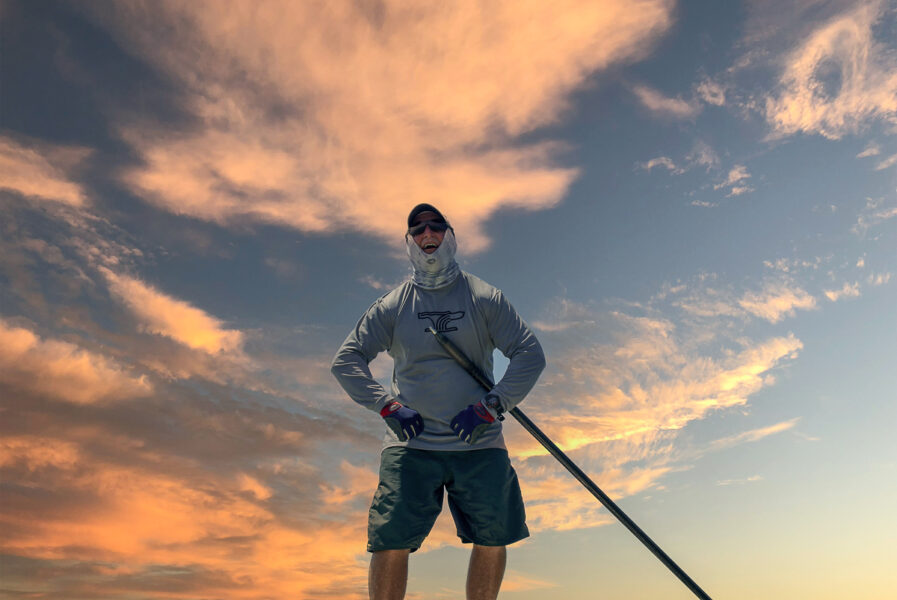Departure From Founders Park
Three months after her promised delivery date, Fishabout finally made her first real run, an extended trip into Everglades National Park. This was the first commercial, guided trip aboard the mothership, with Mike at the helm and Tom handling crew duties.
We had already brought Fishabout south from DeLand to Islamorada, a long delivery run that tested her seaworthiness and shook down the basics. But this was her first true mission as a mothership, and there was still equipment to work out. Things weren’t dialed in yet, and the prep took longer than expected. As a result, Mike and Tom didn’t get underway from Founders Park until late in the afternoon. And no one felt good about it. That late start would turn into more trouble than expected. It set the tone for what happened that night as they ran the boat around Cape Sable to the Little Shark River.
John, our other guide, and I were scheduled to meet the anglers at Flamingo the following morning. From there, we’d run our skiffs out to the mothership, which was anchored near Oyster Bay. Once aboard, we’d unload the gear from the skiffs, get everyone settled, have breakfast, and then head out for a full day of fishing.
Cape Sable
I was sound asleep when my phone rang around midnight, yes, we had real telephones back then. It was Mike. He didn’t waste time with small talk. His exact words were, “I need you to look at the radar to confirm what we are seeing.” And unfortunately, that wouldn’t be the last time I got a call like that from him.
I went to my desktop and pulled up Weather Underground satellite imagery. What I saw was a long, narrow band of severe weather, followed by another band, this one as wide and long as the entire state of Florida. There was a small gap between the two bands, a brief window, but just enough to matter.
The weather hadn’t hit them yet, but Mike said they saw flashes in the distance. Fishabout‘s radar was just starting to pick up the edge of the storm. I told Mike that, unfortunately, what they were seeing was just a dress rehearsal for what was to follow in round two.
That was the last time I heard from Mike and Tom that night. I didn’t get much sleep after that. I had to leave at 6 a.m. to meet the customers at Flamingo.
Northwest Cape
According to Mike and Tom, the second wave of the storm was horrific. The wind had shifted northwest off the Cape, with gusts reaching up to 50 knots, accompanied by heavy rain and lightning, both horizontal and vertical. On top of that, they were dealing with some major equipment malfunctions. It didn’t help that they had the tender in tow, Mike’s 18′ Egret skiff.
No one can recall which happened first, but the engine trim systems malfunctioned. Both engines suddenly trimmed themselves completely out of the water in the middle of the storm. With no power, Tom recalled looking out of the port side window and seeing the tender, which was tethered with a sixty-foot line, even with the wheelhouse like it was trying to race them.
Fortunately, Mike got one of the motors to trim back down. How he was able to do this remains unclear. They regained some speed, but were now running on a single engine, and the tender finally swung back behind the boat. Then came the lightning strike. The hit knocked out all of Fishabout‘s navigation and communication systems, and they were out of range of cell service.
With seas building to six feet, the run around Northwest Cape became brutal. Visibility dropped to near zero. Without satellite or GPS, they were essentially blind. Eventually, the storm began to ease. How Mike was able to find the entrance to the Little Shark River seemed impossible, but somehow, he did, making it into the protected river and finally reaching the anchorage in Whitewater Bay around 5 a.m.
Flamingo at First Light
By the time I pulled into Flamingo, the sky was just beginning to lighten. I was on the verge of panic. This was our first trip, with so much at stake, and I didn’t even know if they had sunk or were still alive. I couldn’t reach them by cell phone. I didn’t know exactly what had happened overnight, but I knew it hadn’t gone well. John was already there, and the anglers were waiting.
Frank and Liz ran a fly shop up in Titusville, a sharp, seasoned couple who knew their way around a skiff and just about anything else. With them were two close friends, along for the trip. We didn’t waste time. After a quick launch and a few quiet looks, we pointed the skiffs toward Whitewater Bay. And, on the way out, we had to explain to them what we knew and what we didn’t, up to that point. The front had cleared, but a strong high-pressure system had settled in, bringing stiff winds out of the northeast.
It took about 45 minutes to reach the designated anchorage near Oyster Bay, but it felt a lot longer. The wind had stirred up the bay, and the closer we got, the more I scanned the horizon for any sign of Fishabout. Every minute of radio silence stretched longer than the last. I kept thinking about everything that could’ve gone wrong, and wondering what, if anything, we were about to find.
There She Was
Just as we rounded a mangrove point off an island, I spotted her. Fishabout was there, huge, somewhat out of place, upright, and tight to the anchor in the breeze. From a distance, she looked like nothing had happened, but I knew better. No one was moving on deck.
We throttled down and approached slowly. I didn’t see Mike at first. The next thing I saw was unforgettable. On the roof of the wheelhouse, the eight-foot antenna mast looked like it had been peeled back like a blooming onion at Outback Steakhouse, with only about two feet of it left. Next to it sat a single pair of sneakers, dry, untouched, and strangely symbolic of someone who had been blown out of their shoes by a bolt of lightning.
And then, there was Mike, stepping out of the wheelhouse with a big smile on his face. The two of them had gotten in around 6 a.m., and after some coffee and a quick breakfast, they were tidying up the boat for our arrival. The wind was still blowing, and the weather remained a bit of a challenge. Our anchor had started to drag, something that would plague us on future trips until we finally corrected it with heavier chain and a larger anchor.
I asked Mike what he was going to do next. Without missing a beat, he calmly said, “I’m going to bake a cake for the guests.” For almost five years, that was the kind of cool and calm response you could expect from him.
After that, the trip went surprisingly well. The guests were enjoying themselves, happy to be there and unaware of just how rough the night had been. The weather held steady enough, and the fish cooperated just enough to keep things interesting. It was followed by other trips, most uneventful. And then came the ones that weren’t. The ones we remember in detail, whether we want to or not.
After years in the fly-fishing industry, Frank and Liz had sold their fly shop, The Fly Fisherman, the premier fly shop in the Southeast. But what was most remarkable is that we convinced them to be the crew of Fishabout for several years after that. They were true professionals, masters of their trade, and brought a level of experience and work ethic that made every trip better.
Tom, our good friend, a former paramedic, fishing guide, and now professional photographer, had volunteered for that first trip, helping us out until we could find a full-time crew. Tom got much more than he bargained for on that run, and to this day, we still talk about it.
Epilogue
Looking back, that first trip aboard Fishabout taught us just about everything we needed to know. She was never meant to be a luxury yacht. She was a working mothership, built for the backcountry, for comfort, and built for people who knew how to fix things on the fly.
That crew, that first trip, those early guests, each one became a part of the boat’s story. Some returned year after year. Some never came back. But all of them left their mark. And so did that night around the Cape for Mike and Tom. No matter how much you prepare, the weather has its plans. Like an old customer of mine named Coll often said, “You can plan your fishing, but you can’t plan your weather.”


